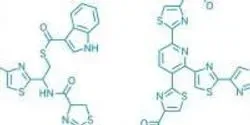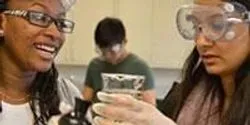Biological Sciences

Lisa Taneyhill, Ph.D., an assistant professor in the Department of Animal and Avian Sciences at the University of Maryland, has been awarded a $1.9 million research grant from the National Institute of Dental and Craniofacial Research at the National Institutes of Health (NIH).

Ebola, as with many emerging infections, is likely to have arisen due to man’s interaction with wild animals – most likely the practice of hunting and eating wild meat known as ‘bushmeat’. A team of researchers led by the University of Cambridge and the Zoological Society of London (ZSL) has surveyed almost six hundred people across southern Ghana to find out what drives consumption of bat bushmeat – and how people perceive the risks associated with the practice.

Problem: The assessment of cell concentration and viability is an important step in the characterization of cell health. This information can be used for monitoring proliferation rates, optimizing growth conditions and normalizing cell data for further studies, such as assessing the impacts of cytotoxic compounds.
Current methods rely on multiple, sometimes complex, instrument platforms to provide these answers, reducing flexibility and increasing research costs. Other, simpler methods provide inconsistent results due to their dependence on single-uptake dyes, which do not effectively discriminate between the various states of cell demise. As a result, there is a crucial need for analytical methods that efficiently provide reproducible count and viability data.

As the threat of antibiotic resistance grows, scientists are turning to the human body and the trillion or so bacteria that have colonized us — collectively called our microbiota — for new clues to fighting microbial infections. They've logged an early success with the discovery of a new antibiotic candidate from vaginal bacteria, reports Chemical & Engineering News (C&EN), the weekly newsmagazine of the American Chemical Society.

Americans love their dogs, but they don’t always love to pick up after them. And that’s a problem. Dog feces left on the ground wash into waterways, sometimes carrying bacteria — including antibiotic-resistant strains — that can make people sick. Now scientists have developed a new genetic test to figure out how much dogs are contributing to this health concern, according to a report in the American Chemical Society journal Environmental Science & Technology.
















